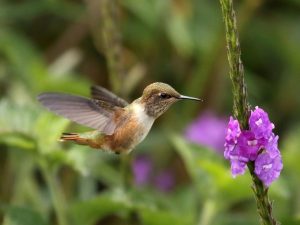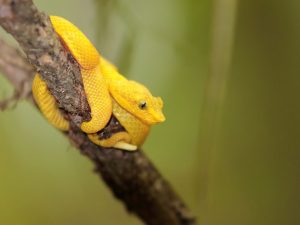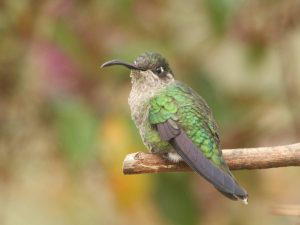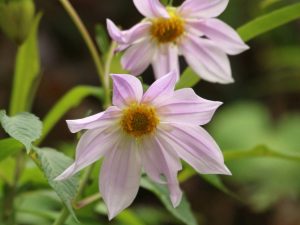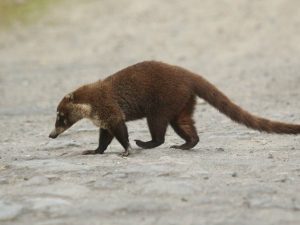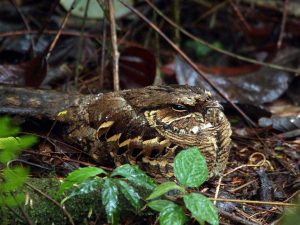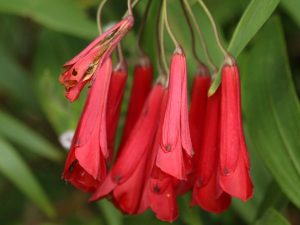
easy birding and natural history
From the western Pacific habitats to the eastern Caribbean slope, this holiday is a perfect introduction to the Tropics, exploring Costa Rica’s exciting landscapes and bird life.
Download leaflet
Wildlife Travel leaflet Costa Rica 2026
Dates
15th – 30th January 2026
fully booked
14th – 29th January 2027
places available
Leaders
2026: Phil Saunders
2027: Laurie Jackson
Price
£5,845
Single Room Supplement – £550
Included
Return flights from London to San Jose. Local transport as specified in itinerary. 14 nights’ accommodation, full board. Entry fees.
Not included
Refreshments. Gratuities. Travel insurance. Covid tests and associated costs.
Group size
Minimum 6, maximum 14.
Costa Rica is a natural history paradise, as discovered by those who travelled with us on our previous 12 visits to this biodiverse country, where a high percentage of the land is managed for conservation. The wildlife will captivate both the new and the more seasoned traveller as we explore coastal forests and mangroves, cloud forests, rainforests and dramatic volcanic cones.
The exciting Tortuguero National Park on the Caribbean coast is not accessible by road but, travelling by boat to our lodge, we have a wonderful tour through the waterways. Moving to the Talamanca mountains, we explore high cloud forest with a chance to see the Resplendent Quetzal! We then move to the Pacific coast, visiting the dry forests in the west of the country, home to Scarlet Macaw and several species of monkey, and the American Crocodiles of the Tarcoles River. We finish our holiday at Poas Volcano where there are spectacular tropical rainforests and beautiful waterfalls.
As we travel we will find out about the ecology, agriculture, and the culture and history of Costa Rica. Accommodation is mostly at attractive lodges and our travel is at a comfortable pace. Walks on easy trails will give us many chances to see hummingbirds and motmots, fruit-eating bats, colourful frogs, and many tropical plants.
Please note that holidays change, although sometimes only slightly, from year to year and previous trip reports may not reflect the planned itinerary, or other holiday details, for the current trip. Please ask us if you would like to know of any significant differences.
Day 1 After a morning flight from the UK we arrive in San Jose in the late afternoon.
Day 2 We travel to the sultry Caribbean coast and Tortuguero National Park, which can be reached only by boat or plane. In the afternoon, we will take a boat ride to visit Tortuguero town, where we will learn about the Green Turtle Conservation Project.
Day 3 We take a boat trip along the canals, watching for otters and monkeys, turtles and numerous birds, including various species of herons and kingfishers. In the afternoon we will walk one of the easy trails through the forest to the sandy beach beyond.
Day 4 We travel by boat through the canals, exploring the riverside habitat on the way. Back on dry land, we head southwards, before climbing into the middle elevations of the Caribbean slope to our destination close to Turrialba. We have time to explore the grounds of our lodge, renowned in particular for its hummingbirds, including the lovely Snowcap and Black-crested Coquette.
Day 5 We explore the trails of the Rancho Naturalista Forest Reserve. As well as the feeding flocks of tanagers, euphonias and other colourful birds, the feeders around the lodge are occasionally visited by White-nosed Coati and (if we are really lucky) Tayra, an enigmatic rainforest predator with a particular liking for well-ripened bananas!
Day 6 A second day acquainting ourselves with the species of the Caribbean slope, with colourful highlights likely to include Lesson’s Motmot, Keel-billed Toucan and Gartered Trogon. In the afternoon, we visit the nearby Angostura Reservoir, where the wetland habitats will introduce us to a different suite of birds: various herons and kingfishers, and the lily-trotting Northern Jacana.
Day 7 We head to the area of San Gerardo de Dota in the middle elevations (2,000m–2,200m) of the Talamanca Mountains. We travel through deep cloud forest, stopping along the way to watch more hummingbirds, paying particular attention to two local specialities, the Talamanca Hummingbird and Fiery-throated Hummingbird. Further along the road we will look for one of the most beautiful birds of the Americas, the Resplendent Quetzal. The largest trogon, famous for its ridiculously long tail, it feeds on the wild avocados in this area, and we will be hoping to find a fruiting tree.
Day 8 We may put more time in to looking for the quetzals again, and we also expect to travel higher, to the paramo habitat of Cerro de la Muerte (approx. 3,100m), home to a very different flora, as well as the endemic Volcano Junco, Volcano Hummingbird and Timberline Wren. After lunch we explore part of the famous Los Quetzales National Park along the Savegre River, an area rich in birdlife.
Day 9 We head down into the foothills of the Pacific slope. On the way, we stop at Bosque del Tolomuco, a great place for hummingbirds and tanagers, where more typically ‘highland’ species such as Spangle-cheeked Tanager mix with foothill species such as Snowy-bellied Hummingbird and Speckled Tanager. We finish our day down on the Pacific coastline.
Day 10 We will take a boat trip out into the waters of Marino Ballena National Park where we hope to see Humpback Whales and various other marine life. After lunch we will have some time to visit the local market in Dominical.
Day 11 We explore Baru National Wildlife Refuge, looking for Great Currasow and Central American Agouti, as well as Brown-throated Three-toed Sloth and Panamanian White-faced Capuchins overhead.
Day 12 We visit the Carara Biological Reserve, described as a ‘must’ for anyone interested in tropical biology, with high species diversity and relatively easy access. The forest in this area is a wonderful contrast to the rainforests and cloud forests we have seen elsewhere, and has a very different set of species.
Day 13 We take a boat trip on the Tarcoles River, exploring the muddy banks and mangrove swamps: more than ten species of heron can be seen here, including the shy Boat-billed Heron. Nearby, we stop at the famous ‘crocodile bridge’, where the large American Crocodiles lounge on the river bank, before we return to the capital of San Jose.
Day 14 We visit Poas Volcano enjoying the wonderful view of one of the most accessible volcanoes in the country: the crater is about 30 minutes slow walking from the main entrance, and we hope to find Volcano Hummingbird and Poas Squirrel along the way, while getting a good (sulphury) sense of nature’s power from the rim of the caldera. Heading for lower altitudes, we travel to San Fernando Waterfall, located in the cloud forest of the Caribbean slope, where we will see many hummingbirds and tanagers, Blue-throated Toucanet and Prong-billed Barbet coming to the feeders.
Day 15 One last morning excursion, as we explore an area of undeveloped remnant scrub and grassland not far from the airport, where some of the birds of the Central Valley’s dry woodlands can be found. And then, all too soon, it will be time to head back to the hotel to re-pack, ready for our afternoon flights home, arriving Day 16.
Please note that the itinerary may be changed to suit the weather or other practicalities at the discretion of the leaders.
All of the lodges and hotels are of a good standard, some with very attractive settings. All the rooms have private bathrooms with hot water and are either air-conditioned or have ceiling fans where needed. Some lodges may have a swimming pool available. Single rooms are available in all locations. The exact lodge or hotel used may be changed if local conditions change or if we feel a different choice would suit our needs better.
All meals are included – some lunches will be in local restaurants, and we will take a picnic on some days.
We will do our best to ensure that our travelling is as comfortable as possible. There will be days when we are transferring from one area to another where the journey may take much of the day but we will take plenty of stops for comfort breaks and to enjoy interesting areas. Some journeys will be made by boat (to Tortuguero).
Group flights
Group flights are with British Airways from London Gatwick to San Jose.
15th January depart London Gatwick 11.05, arrive San Jose 16.50
29th January depart San Jose 18.35, arrive London Gatwick 10.55 (30th)
It may also be possible to fly from Manchester, with Delta Airlines via the US: ask us about options and costs.
Time zone
Costa Rica is six hours behind of UK time.
Entry requirements
If you hold a British passport do not need a visa to enter Costa Rica. You may stay as a visitor for up to 90 days under a tourist visa waiver. If you are visiting Costa Rica, your passport should have at least one day’s validity from the date you are leaving Costa Rica.
We will be travelling at the start of the dry season making travelling easier and with less likelihood of rain in some areas, although the weather may still be unpredictable and wet at times.
In the lowland rainforest of the Caribbean side, a number of plant species are in flower at any one time, depending on local climate patterns, and this area, and the mountains, can be visited at any time of year to see a good variety of birds, other animals and plants. November is a good time of year to visit the drier Pacific coast.
In the lowlands, particularly on the coast, it can be humid and relatively hot but we will adapt our plans to the temperatures. The cloud forest is, effectively, a higher altitude rainforest and we can expect generally cooler weather with, perhaps, some showers.
You will need to have a reasonable level of general fitness to be able to participate in the holiday. The tour visits several locations and travelling in the tropics can be tiring if you are not used to it. However, the trip is designed to be relatively comfortable so please discuss any concerns with us.
Although most of the walks are not long, we will sometimes be walking on rough or wet ground. Walking boots (lightweight ok) are essential for most areas. There are a few occasions when we walk uphill but this is not excessive.
As we are in the tropics, the sun is very strong, even when it appears overcast. Sun protection (hat, sunglasses and suncream) is essential. Where possible, we will avoid walking in the hottest part of the day.
The highest altitudes visited during our itinerary will be c 3,100m asl at Cerro de la Muerte (the lodge is at a lower elevation) and 2,800m asl on Poas Volcano. There is some risk of altitude sickness although rest and drinking plenty of water usually relieve any mild effects (headaches and tiredness).
If you have suffered from altitude problems before or are suffering from any medical condition, you should take your doctor’s advice. We will be taking it easy at these higher altitudes and none of the walking will be strenuous
Safety advice given by the leaders must be heeded at all times. We will receive a safety briefing once on board the boat, and safety rules (e.g. wearing life jackets whilst in small boats) are strictly adhered to. Safety guidelines must also be followed when using canopy walkways, or in relation to volcanic areas.

